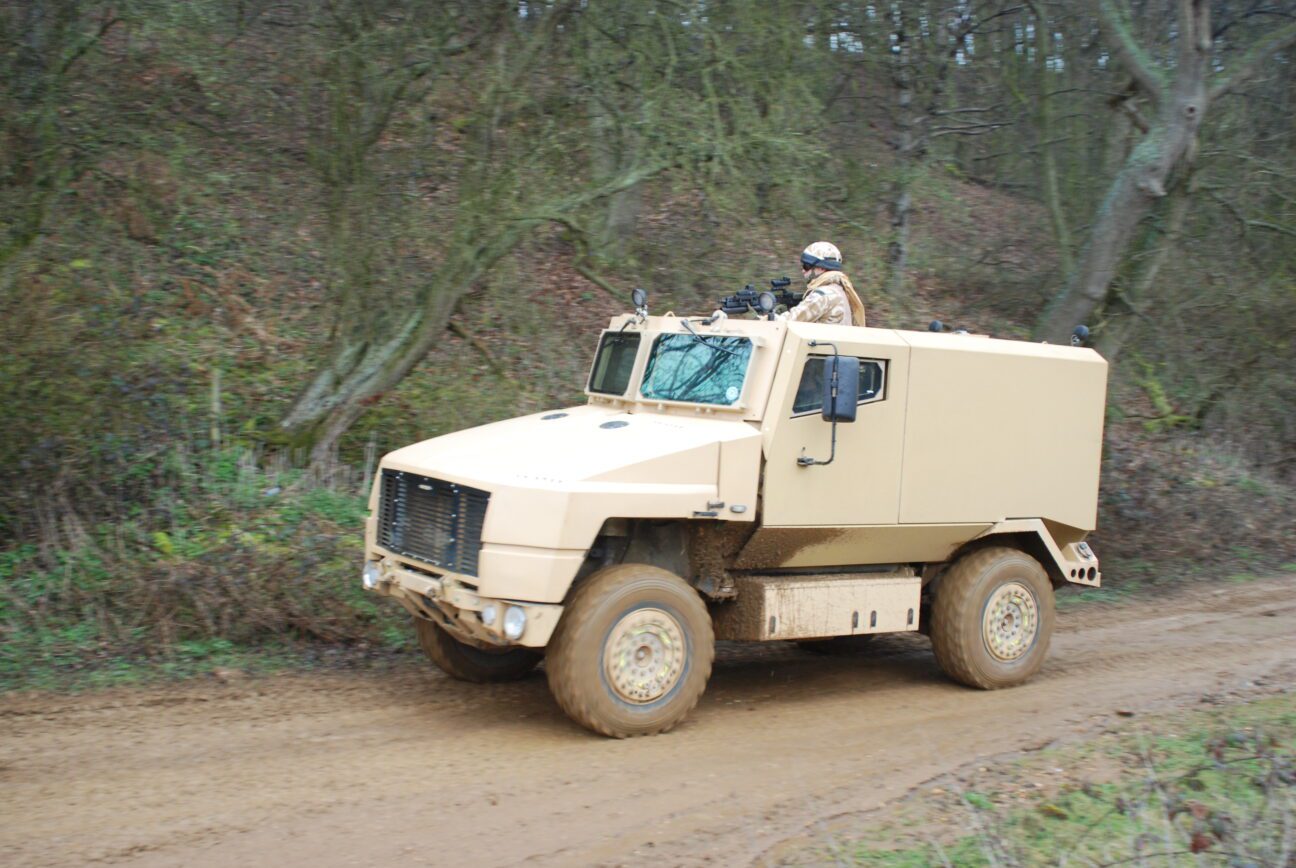
The first running prototype of the Supacat Protected Vehicle (SPV) 400 is officially revealed today by Supacat Ltd. The vehicle is currently being subjected to a detailed trials programme. The second SPV400 prototype is being completed at Supacat’s Devon, UK, facility and will enter the trials programme towards the end January. Further development vehicles are scheduled to follow.
The vehicle was subjected to blast testing in December 2009 where Supacat’s design philosophy for highly mobile and lightweight protected vehicles was proven. To read more about these tests, click here.
The SPV Series is the next generation design from Supacat to enhance the company’s successful range of high mobility vehicles, which includes its HMT (High Mobility Transport) vehicles, Jackal and Coyote, which are in service with the UK Armed Forces in Afghanistan.
“The SPV400 is a superb achievement by Supacat’s innovative engineering team here in the UK. Its clean sheet design offers an upgradeable solution for 21st century operations and takes the performance of lightweight protected mobility platforms to new levels, making it the vehicle to beat in the international markets we see for this class of vehicle,” said Nick Ames, Managing Director of Supacat.
To find out more about the SPV400 click here.
To read about the SPV400 launch click here.
About the SPV Series
The 4×4 SPV 400 Series concept, which carries a 2+4 crew and has a declared GVW of 7500kg, provides a useable payload of 1500kg.
The SPV design combines a fully integrated protection system with a cutting edge automotive solution with supreme cross country performance and the agility to operate in tight urban environments. The protection system is fully integrated and comprises a V-shaped hull to provide mine blast protection and a composite crew “pod” to provide both blast and ballistic protection. The system includes mine blast seats and configurable ballistic armour to meet specific operational threats. The protection system has been developed in conjunction with NP Aerospace.
The SPV survivability is predicated on “Fully Integrated Protection”, in which the threat protection measures are integrated into the vehicle structure to achieve an optimised high protection, low weight solution. It uses an armoured steel V-shaped chassis hull, manufactured as a single structure, with high ground standoff to provide integral blast protection. The axle assemblies are mounted in sacrificial sub frames, fore and aft of the hull, designed to blow off in the event of a wheel mine blast. The composite crew pod sits over the hull, between the wheels, and utilises the latest composite and ceramic armour systems to mitigate the operational threats at optimal weight. The composite armour systems are designed by NP Aerospace, building on their extensive weight efficient composite experience.
The SPV chassis design extends the “mobility performance” ethos of previous Supacat vehicles and incorporates all our experience from previous platforms. High articulation independent suspension, air spring units and tuned-for-purpose damping coupled to managed power transmission provides all terrain mobility and speed. A starter-generator provides substantial electrical power for all mission scenarios and the same Cummins engine and Allison transmission system matches the logistic footprint of Jackal and Coyote.